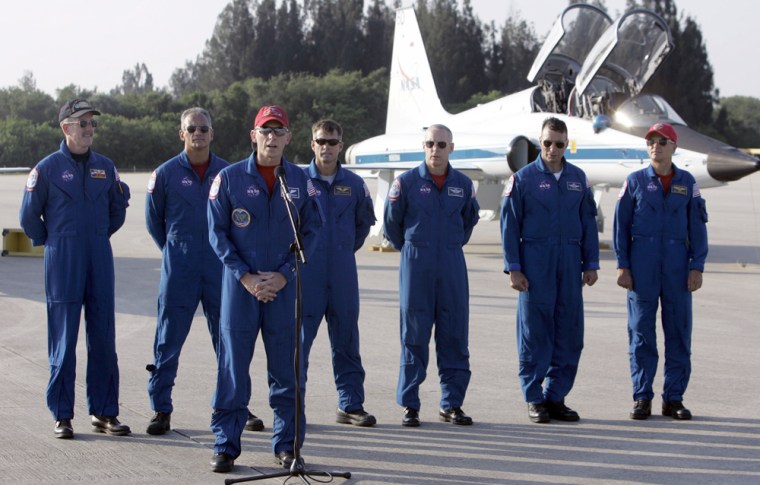The crew of the space shuttle Atlantis took scrupulous notes during two of last year’s construction missions on the international space station. They’ll be expected to accomplish the same challenging tasks.
Spacewalking astronauts last year ran into some glitches and had to figure out how to loosen stubborn latches and bolts, how to fold up an obstinate solar array (kind of like folding a wrinkled roadmap) and how to get the solar array’s rotary joint to spin. All these are tasks the seven astronauts will tackle during their 11-day mission.
“We’ve had the benefit of learning from the people who have gone before us,” said astronaut Patrick Forrester.
The four first-time spacefliers in the crew — Clayton Anderson, pilot Lee Archambault, Danny Olivas and Steven Swanson — were all members of the astronaut class of 1998.
All of Atlantis’ astronauts were born in the United States, a contrast to flights in recent years that typically include an international crew member. This is the first time there’s been an all native-born crew since April 2002.
Here is a more detailed look at the seven flying aboard Atlantis:
U.S. Marine Col. Frederick “Rick” Sturckow, commander
Age: 45
Hometown: Born in La Mesa, Calif. but considers Lakeside, Calif. his hometown.
Family: Married, two children.
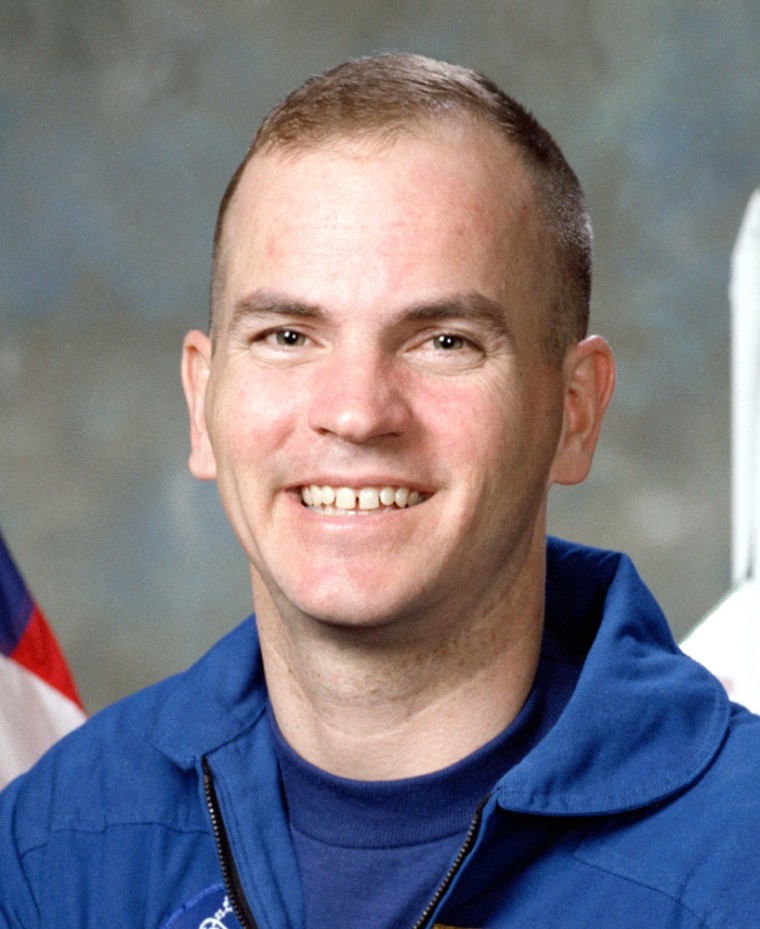
Sturckow has the nickname C.J., or Caustic Junior, but he swears it’s not because of his personality. It was given to him when he was a young Marine because he resembled a squadron commander who was appropriately called “Caustic.”
After earning a bachelor’s degree in mechanical engineering from California Polytechnic State University, Sturckow was commissioned by the Marines in 1984 and earned his pilot wings almost three years later. He attended the Navy Fighter Weapons (Topgun) School, and later the U.S. Air Force Test Pilot School at Edwards Air Force Base. During the first Gulf War from 1990-91, he flew 41 combat missions. Sturckow worked as a test pilot before he was chosen for the astronaut corps in 1994.
He’s flown on two missions to the space station, one on Endeavour in 1998 and the second on Discovery in 2001. One of his crewmates then was Patrick Forrester, who will be flying with him again on Atlantis.
U.S. Air Force Col. Lee Archambault, pilot.
Age: 46
Hometown: Born in Oak Park, Ill., but considers Bellwood his hometown.
Family: Married, three children.
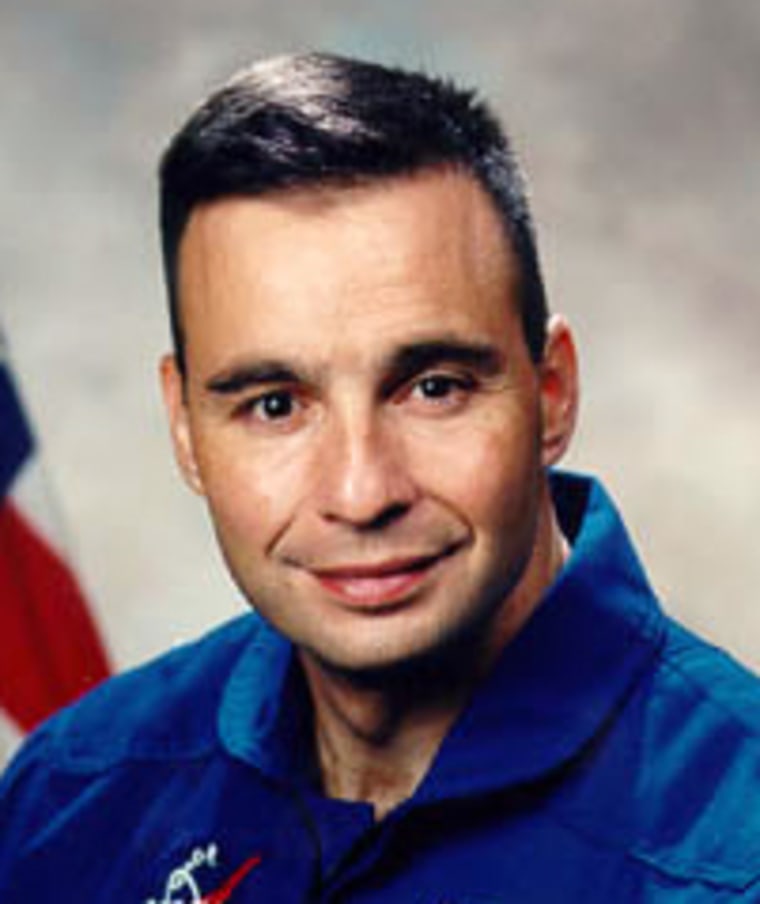
Archambault is hesitant to tell how he earned the nickname Bru as a young lieutenant. Let’s just say it involved a fighter bomber he was flying, the mistaken flipping of some switches and the accidental jettisoning of a bomb rack unit, also known as a “bru.”
“We were on a range. There were no houses, no people, nothing below us. It ended up being a very embarrassing experience,” he said. “When I came to NASA, I thought (the nickname) would all be over. One of my first days after I walked through the door, somebody called me it and it stuck.”
Archambault was commissioned by the U.S. Air Force in 1985 after he earned bachelor’s and master’s degrees in aeronautical/astronautical engineering from the University of Illinois at Urbana-Champaign.
After getting his pilot wings in 1986, he became a combat-ready pilot and later flew 22 combat missions during the first Gulf War. He had a second tour in Saudi Arabia in 1991, assisting postwar peacekeeping efforts, and then flew as a test pilot after attending U.S. Air Force Test Pilot School at Edwards Air Force Base.
He was selected into the astronaut corps in 1998, and this will be his first spaceflight.
“If I had to guess right now, the most exciting part of the mission will probably be the first eight minutes as we make it into orbit,” he said.
Retired U.S. Army Col. Patrick Forrester
Age: 50
Hometown: El Paso, Texas.
Family: Married, two children.
On Forrester’s first trip to space in 2001, Rick Sturckow, then-pilot of the flight and the commander on Atlantis’ upcoming mission, told him that even though he was a spaceflight rookie, he would be treated as an equal. The astronauts became fast friends.
“That really endeared me to him, from the very first day,” Forrester said.
Forrester earned a bachelor’s degree in applied sciences and engineering from the U.S. Military Academy in West Point, N.Y. and a master’s degree in mechanical engineering and aerospace engineering from the University of Virginia.
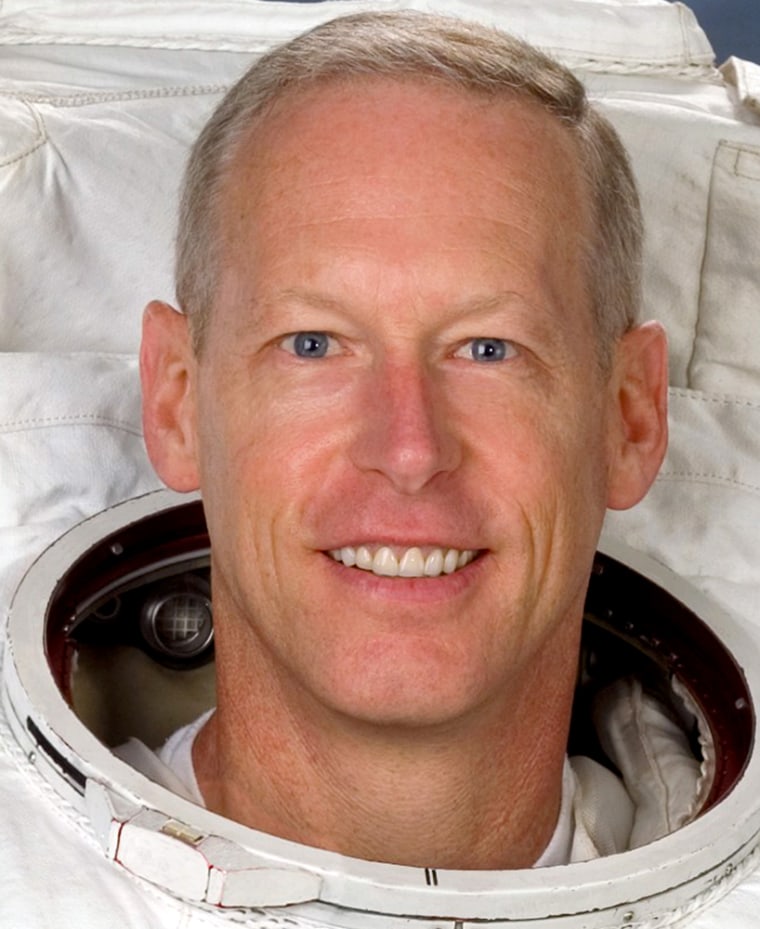
He was commissioned by the U.S. Army in 1979 and worked as a flight test engineer, an experimental test pilot and an engineering test pilot. He graduated from the U.S. Naval Test Pilot School and has attended a handful of other military schools.
He became an engineer at Houston’s Johnson Space Center in 1993 and joined the astronaut corps in 1996. During his first shuttle mission, he went on two spacewalks.
On Atlantis’ mission, his second trip to space, he will perform one of the three planned spacewalks and will be coordinator of the other two. As the primary robotic arm operator on the shuttle, he also will lead in-flight inspections of the spacecraft’s thermal protection system.
Steven Swanson
Age: 46
Hometown: Born in Syracuse, N.Y., but considers Steamboat Springs, Colo., his hometown.
Family: Married, three children.
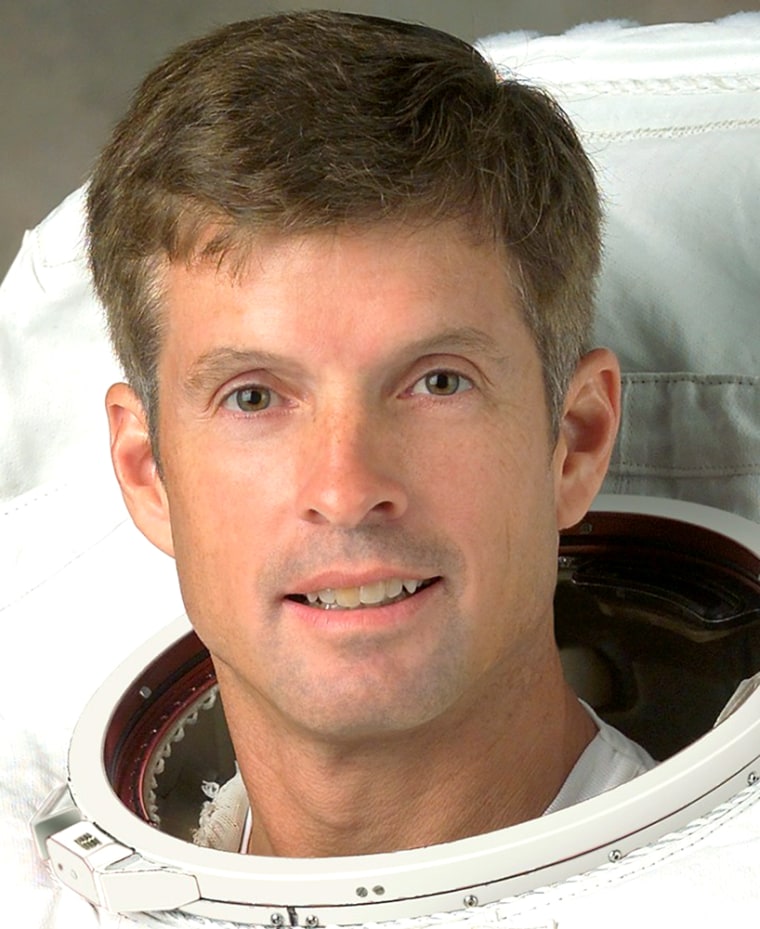
On his first trip to space, Swanson is bringing up a small Lego astronaut for his youngest child.
Although he has never flown on a space shuttle, Swanson has plenty of experience working on the airplane that serves as the shuttle simulator. When he first joined NASA as an engineer in 1987, he worked on the Shuttle Training Aircraft, improving its navigation and control systems. He was selected to be an astronaut 11 years later in the class of 1998.
He earned a bachelor’s degree in engineering physics from the University of Colorado, a master’s degree in computer systems from Florida Atlantic University and a doctorate in computer science from Texas A&M University.
John “Danny” Olivas
Age: 40
Hometown: Born in North Hollywood, Calif., but was raised in El Paso, Texas.
Family: Married, five children.
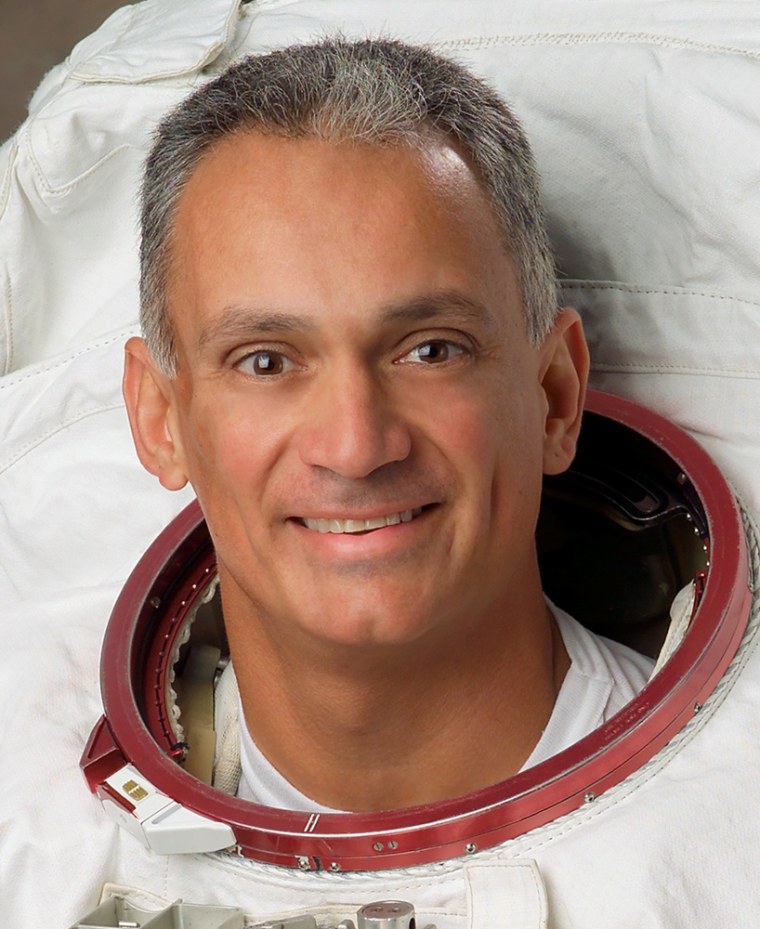
Sure, Olivas has six patents and a doctorate in mechanical engineering and material science from Rice University — but he says, deep down, he and his fellow astronauts are just normal guys who like to tinker on their cars.
That combination of tinkering and a fundamental understanding of engineering principles will serve Olivas well when he goes on two of the mission’s three spacewalks, removing bolts and restraints from the space station’s new addition while floating in the void of space.
In addition to his doctorate, Olivas has a bachelor’s degree in mechanical engineering from the University of Texas-El Paso and a master’s degree in mechanical engineering from the University of Houston. Before joining the astronaut corps in 1998, he was a research engineer and program manager at the Jet Propulsion Laboratory, where he researched microelectronics.
This is Olivas’ first spaceflight.
James Reilly
Age: 53
Hometown: Born at Mountain Home Air Force Base, Idaho, but considers Mesquite, Texas, his hometown.
Family: Single, three children.
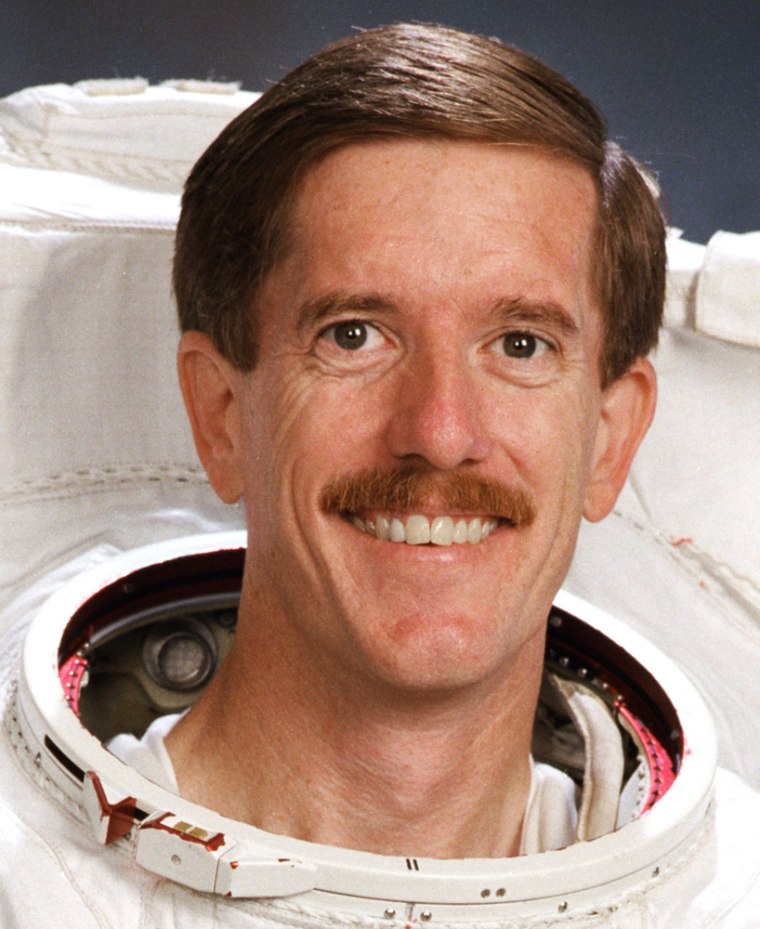
Reilly will lead two of three spacewalks during Atlantis’ mission to the space station.
The Texan has experience. Reilly and another astronaut performed three spacewalks during his last visit to the space station in 2001. On his first trip to space in 1998, Reilly visited Russia's Mir space station aboard Endeavour.
Reilly earned bachelor’s, master’s and doctorate degrees in geosciences from the University of Texas-Dallas.
In graduate school, he was part of a research expedition that lived for several months in Antarctica. Before joining the astronaut corps in 1994, he worked as an oil and gas exploration geologist for a Dallas firm during which he lived for days at a time underwater in deep submergence vehicles.
Reilly is bringing an Irish flag to the space station and back since his grandparents were from Ireland.
Clayton Anderson
Age: 48
Hometown: Born in Omaha, Neb., but considers Ashland, Neb. his hometown.
Family: Married, two children.
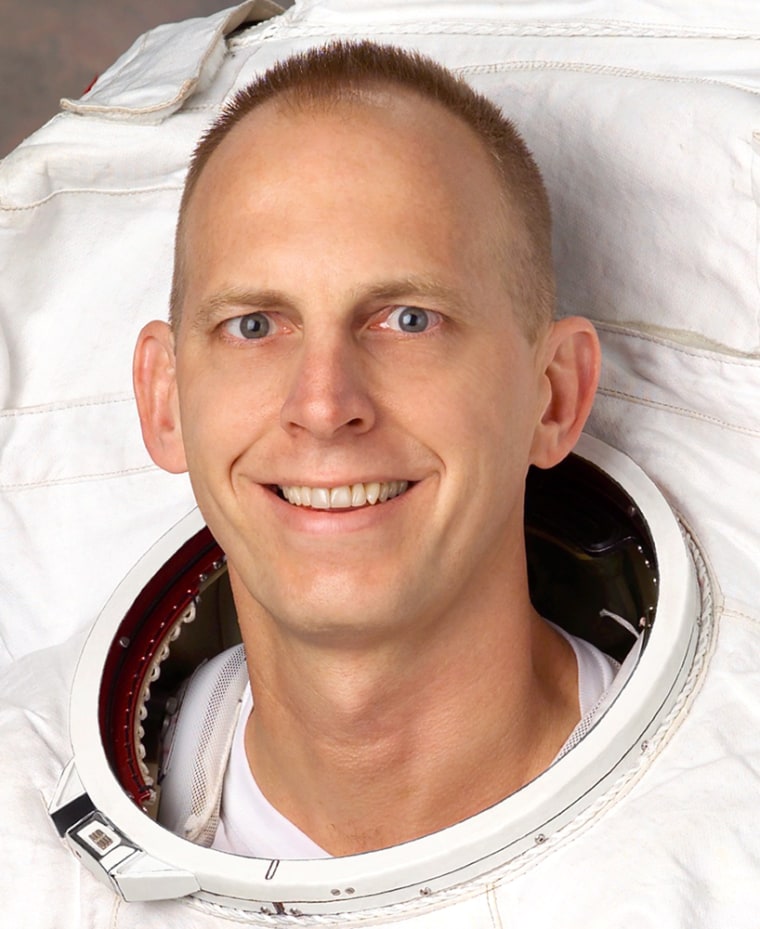
The Nebraska native had been scheduled to fly to the space station in August aboard Endeavour, but NASA managers made an 11th-hour decision to switch Anderson to Atlantis’ flight in June so he could replace astronaut Sunita “Suni” Williams as a crew member at the space station. Without Anderson replacing her, Williams’ stay in space would have extended to eight months, instead of the planned six to seven months. The juggling is the result of a canceled flight of Atlantis in March, creating a domino effect that pushed back the year’s three other shuttle missions. Williams’ original return flight to Earth aboard Endeavour was delayed from early July to late August.
On his first spaceflight, Anderson will make three spacewalks during a four-month stay at the space station.
Anderson has worked his whole career at the Johnson Space Center.
After earning a bachelor’s degree in physics at Hastings College in Nebraska and a master’s degree in aerospace engineering at Iowa State University, he started working for NASA in 1983 as an engineer for early shuttle and station missions. He joined the astronaut corps in 1998.
Anderson played football and basketball and ran track in college, and in his free time he has worked as a referee for NCAA Division II basketball games and high school basketball games.
Anderson has given his grade school-age son and daughter each a half medallion. He plans to take the two other halves with him to space.
“Every night, we’re going to take out our medallions and say a prayer for each other,” he said. “Then eventually when I return to Earth, we’ll be able to put those medallions together.”
